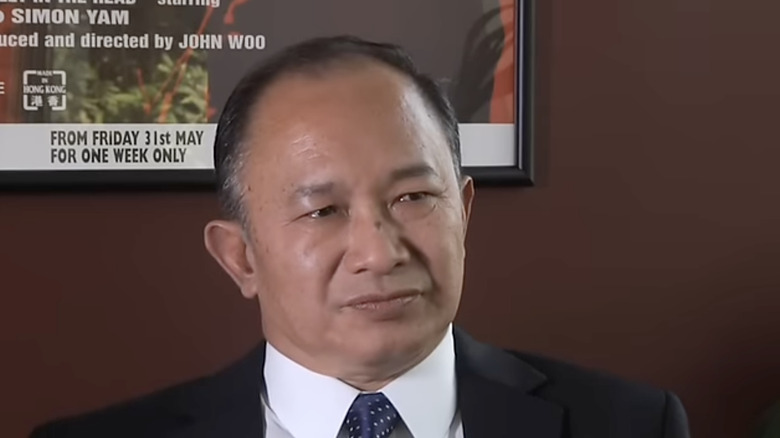How John Woo Developed His Iconic Double-Gun Shoootout Scenes
Ever since John Woo revolutionized the action film with his 1986 triumph "A Better Tomorrow," critics have described his "gun-fu" choreography as balletic. It turned out this is precisely how Woo wanted his bullet-whizzing sequences to be viewed. A huge fan of musicals, Woo stages these squib-popping set pieces as if he's directing Fred Astaire, Ginger Rogers, Gene Kelly, or Cyd Charisse. They're invigorating bursts of elegant brutality that'll leave you gasping in delight, so long as you can stomach the gratuitous bloodshed.
I've always had a very strong stomach (with a few extreme exceptions), so I've never been bothered by the unremitting violence in Woo's movies. They're so hyper-stylized that, even though the movies generally have a real-world aesthetic (this changed when he got to Hollywood), when the guns start blazing a huge, silly smile breaks out across my face. As with the climactic shootout in Sam Peckinpah's "The Wild Bunch," the heightened emotions expressed by god-tier actors like Chow Yun-Fat, Sally Yeh, and Tony Leung Chiu-wai are the stuff of big opera. They're thrilling, tragic, and cathartic in equal measure.
Still, you might be wondering where Woo got the idea to have his characters two-fisting handguns, because, well, this is not a trope common to Hollywood musicals or operas. Instead, the deployment of this flourish was drawn from the director's love of Westerns. But when it came to what kind of handguns would work best in these scenarios, the gun-ignorant Woo had to seek advice from his crew.
John Woo found both-barrels inspiration in Westerns
In an October 2025 interview with Variety, Woo acknowledged, "I'd seen a lot of Westerns." When it came to the type of firearm his protagonist would use in the pioneering "A Better Tomorrow," Woo added, "[I]f he's a professional killer and he's a true hero, he would never use a machine gun. It's too easy and not elegant."
Woo's next task was selecting the right gun for the job, which, again, proved confounding for a man who'd never been a gun-owner. The film's weapons crew recommended Beretta 92F semiautomatics, which would, when fully-loaded and grasped in either hand, deliver 30 rounds in rapid succession. That's how Woo found that staccato rhythm that would serve as the percussive beat to which his gunmen would, in essence, dance. The action itself is preposterously unrealistic, but, oh, to watch a master like Chow Yun-fat channel his inner, gun-slinging Kelly.
Once Woo's films began making their way to the United States ("The Killer," which he's since remade, was the first to make an arthouse splash), countless directors, most notably Quentin Tarantino and Tony Scott, had their characters blasting off two handguns as a kind of homage. 1990s action cinema would've looked remarkably different had John Woo never knocked the genre over the top with his Hong Kong classics.

